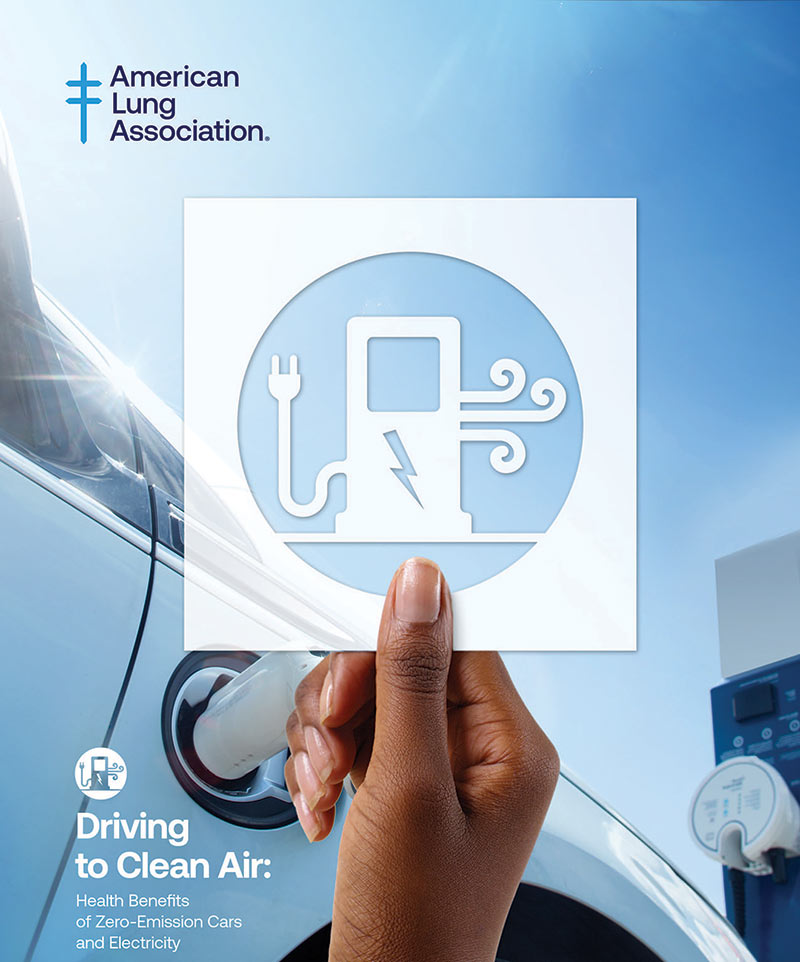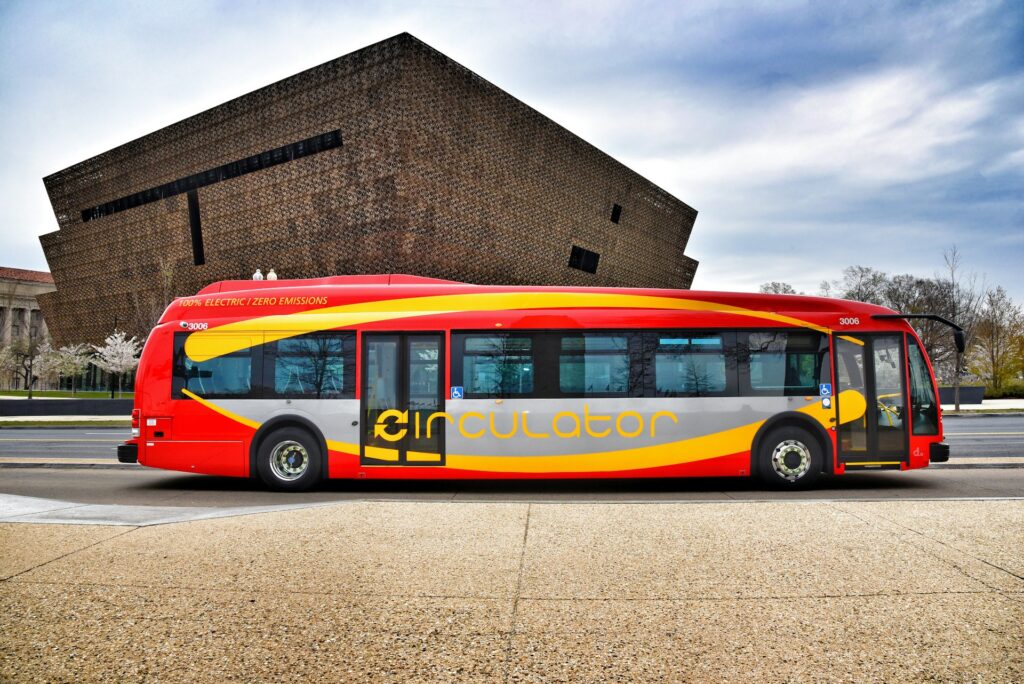Children are at risk of alarming levels of air pollution caused by traditional cars. New evidence from The American Lung Association’s recent “State of the Air” reports finding that 120 million people in the U.S. reside in counties with unhealthy ozone or particle pollution. Kids face more significant risks than adults because polluted air can stunt the growth of their lungs, increasing the risk of respiratory illnesses.
“Approximately 4.5 million children are living with asthma. The impact of air pollution is also racially skewed, with people of color 64% more likely to live in communities affected by unhealthy air,” said Kate L. Harrison, the co-founder and Head of Marketing at MoveEV, in a press release. Unfiltered air can affect the lungs and alter brain development, leading to neurodevelopmental and other health problems later in life.
The transition to zero-emission transportation is crucial for children, who are the custodians of the future. Electric vehicles (EVs) not only promise a greener tomorrow but also hold the capacity to improve the younger population’s health by reducing air pollution.

Urban living is a primary culprit behind the increased risk of respiratory problems—like coughs and colds—among babies and young children. Younger individuals who grow up in cities suffer more respiratory infections than those living in the countryside.
Transportation is one of the country’s most prominent contributors to carbon pollution, making up 29% of the nation’s greenhouse gas emissions in 2021. Cars, buses, trucks, and motorcycles are all vehicles that release gases from their internal combustion engines. These emissions contain various harmful substances, including nitrogen dioxide, particulate matter, carbon monoxide, and volatile organic compounds.
In a 2022 report, around one in 12 new cases of asthma in children worldwide are associated with nitrogen dioxide. The number of pediatric asthma cases linked to this toxic substance in urban areas has decreased recently, mainly due to stringent air regulations established in higher-income countries, such as the U.S.
However, pollution has risen in Sub-Saharan Africa, South Asia, and the Middle East. Despite the decrease in area, the glaring cases worldwide remind governments to implement solutions to the unsafe air people are constantly exposed to.
Many interventions must be implemented in first-world countries and parts of the world still grappling with high emission levels. According to Kate L. Harrison, “Cleaning up our air must be a priority for cities of all sizes. EVs, which produce zero tailpipe emissions, are a technological marvel and a vital tool for promoting public health, childhood development, and community well-being.”
Transitioning to EVs powered by clean, non-combustible energy significantly reduces health impacts among children. The shift towards greener vehicles could prevent 2.79 million asthma attacks, 1.87 million lower respiratory symptoms, 2.67 million upper respiratory illnesses, 147,000 acute bronchitis cases, and 508 infant mortality cases. By using EVs, the world can expect a decline in greenhouse gas emissions, and respiratory diseases, and a significant improvement in outdoor air quality.

The prevalence of these pressing health issues among children underscores the need for the government to encourage drivers to switch to EVs to safeguard children’s health. Many municipalities have already made great strides in implementing rules for children’s welfare.
For instance, a 2016 study by Safe Kids Worldwide examined 39,000 students and 56,000 drivers in school zones in the country. It revealed that one in 10 drivers used mobile phones as they arrived or left drop-off or pickup zones. In response to these dangers, Pennsylvania’s Act 44 prompted schools to use safety barriers and fences near driveways to protect children from possible accidents.
Just as actions were taken to protect children from harm, the same attention must be given to the widespread use of EVs. For instance, municipalities in Michigan are making the shift to EVs easier and more convenient for drivers by providing charging equipment in public parking lots.
In Los Angeles, there’s an ongoing Residential EV Charging Station Rebate Program by the Los Angeles Department of Water & Power (LADWP). Per the stipulations, account holders who drive EVs can receive a rebate of up to $1,000 when they purchase and install a qualified Level 2 charging station.
Aside from incentivizing EV drivers, municipalities should also collectively commit to making a greener transportation system for residents. More investments in sustainable innovations like electric buses could go a long way toward reducing pollution-related diseases among children. For instance, Indianapolis, Indiana launched the IndyGo Red Line, an electric bus line connecting several neighborhoods to high-employment areas.

The shift to EVs can also offer economic benefits. Kate L. Harrison said, “By transitioning to EVs, communities can cut their vehicle fueling costs by half or more,” leading to savings of up to $978 billion in public health benefits across the U.S. by 2050. Based on national averages, EV drivers spend $1.22 to drive the same distance a traditional car could achieve with a gallon of gasoline.
Aspiring EV drivers can maximize their savings with the 2022 Inflation Reduction Act. According to its provisions, individuals who buy all-electric, plug-in hybrid, and fuel-cell electric vehicles purchased new from 2023 onwards could benefit from up to $7,500 federal income tax credit. This incentive encourages broader usage of EVs and contributes to environmental conservation. With the government’s improved promotion of this benefit, the nation can gradually transition toward becoming an EV-centric community.
By encouraging more widespread electric vehicle adoption, the country can take significant steps toward a healthier, brighter future for children.
Stay tuned for constant Tesla updates, follow us on:
Google News | Flipboard | X (Twitter) | WhatsApp Channel | RSS (Feedly).
Related
- SpaceX Bastrop factory ramps up Starlink production to 70,000 kits per week in just 20 months
- SpaceX reschedules Starship Flight 8 to a new launch window
- Tesla OTA update 2025.2.8 Release Notes (third-party charger preconditioning, rear traffic alert, more)
- Elon Musk explains why SpaceX scrubbed Starship Flight 8
- Live updates: Starship Flight 8 — watch the live stream (scrubbed)
- Tesla Model Y Juniper’s acoustic glass effectively blocks external noise (test videos)








